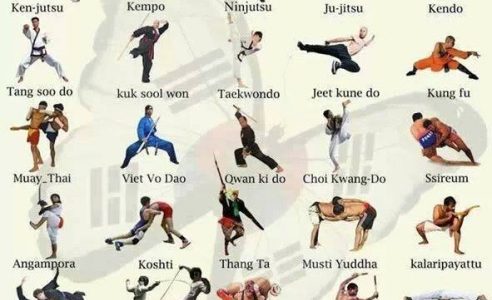Revealing The Range Of Martial Arts Disciplines: An Overview From Martial Arts To Taekwondo
Revealing The Range Of Martial Arts Disciplines: An Overview From Martial Arts To Taekwondo
Blog Article
Web Content By-Becker Haastrup
Are you tired of feeling overwhelmed by the vast world of fighting styles? With many styles to choose from, it can be very easy to obtain lost in a sea of punches, kicks, and mystical names. However fear not!
This conversation will certainly debunk the different martial arts designs, taking you on a trip from the effective strikes of Martial arts to the dynamic kicks of Taekwondo. Get ready to discover the beginnings, methods, and ideologies behind these ancient art types.
So, tighten your belt and prepare to start an enlightening exploration right into the exciting globe of fighting styles.
Beginnings of Martial Arts Styles
The origins of fighting styles styles can be traced back to old people and their demand for protection and fight methods. Throughout history, different societies developed their very own unique techniques of battling, each with its very own set of methods and viewpoints.
In China, as an example, fighting styles designs such as Kung Fu and Tai Chi were developed as a means of protection and enhancing physical and psychological wellness.
In Japan, the samurai warriors developed designs like Martial arts and Judo, focusing on self-control, precision, and mastery of the body.
Similarly, in Korea, Taekwondo emerged as a fighting style emphasizing high kicks, quick activities, and mental perseverance.
These very early worlds laid the foundation for the varied selection of martial arts designs that exist today, each with its own rich background and social relevance.
Methods and Training Approaches
To understand fighting styles designs, practitioners need to learn different techniques and training methods.
Techniques are the details movements and activities made use of in battle, such as punches, kicks, throws, and blocks. Different fighting styles styles have their very own special set of strategies that professionals must grasp with strenuous training.
Educating techniques vary depending on the design, but they normally involve a combination of physical conditioning, drills, competing, and types.
Physical conditioning is critical to build toughness, adaptability, and endurance. Drills help professionals improve their strategies and improve their rate and accuracy.
Sparring permits professionals to exercise their techniques in a controlled, sensible setting. Kinds, likewise referred to as kata, are cut-and-dried sequences of motions that help professionals create muscular tissue memory and focus.
Ideologies and Concepts
Checking out the approaches and concepts of martial arts styles can provide you with a deeper understanding of your chosen technique. Each fighting style has its own one-of-a-kind ideology and collection of guiding concepts that shape the means it's practiced.
For instance, Karate highlights self-control, respect, and self-discipline. private martial arts lessons near me educates specialists to concentrate their minds and bodies, enabling them to defend themselves while preserving a sense of inner peace.
On the other hand, Taekwondo puts a solid emphasis on speed, agility, and adaptability. Its principles are rooted in the tenets of courtesy, integrity, willpower, self-constraint, and resolute spirit.
Conclusion
Since you've explored the origins, methods, and ideologies of various fighting styles designs, you have a deeper understanding of these old techniques.
Picture a young karate student, exercising with steadfast determination and focus, breaking through boards with a powerful punch.
Their trip showcases the dedication and toughness called for to grasp a fighting style, reminding us that with technique and willpower, anything is possible.
